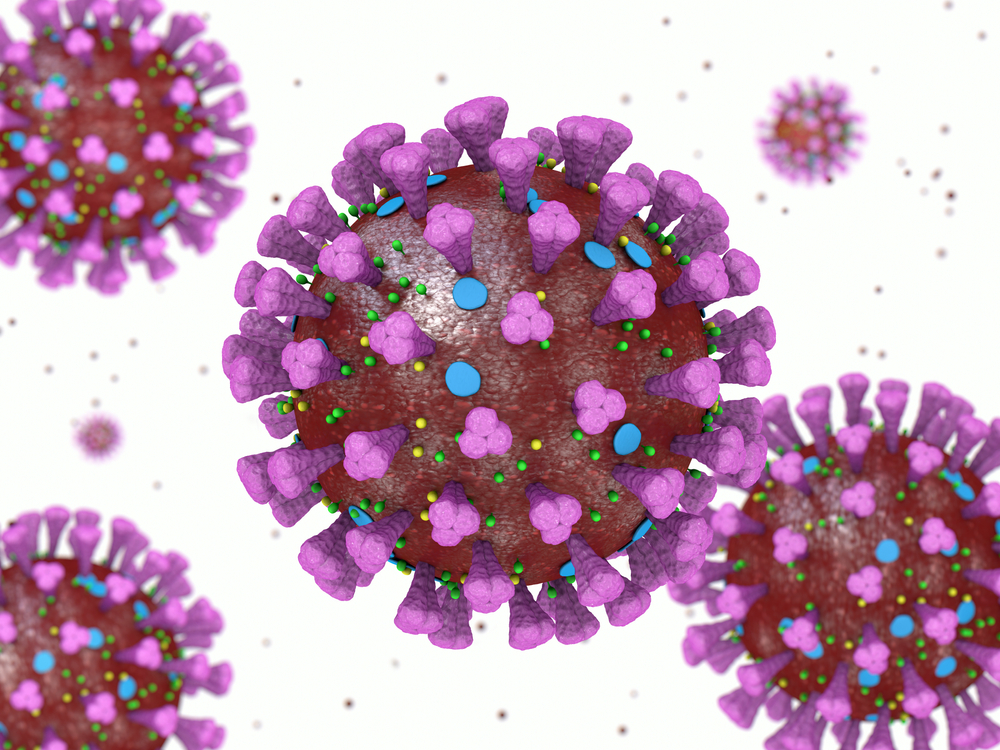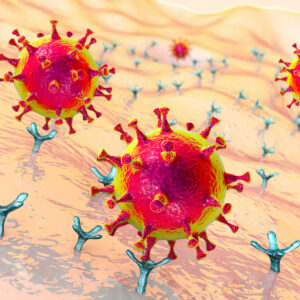
SDS-PAGE: Coomassie-stained SDS-PAGE showing purified SARS-CoV-2 Omicron Spike subunit 1 (S1).
SARS-CoV-2 (B.1.1.529/Omicron) Spike Glycoprotein (S1), Sheep Fc-Tag (HEK293)
Price range: $817.70 through $4,193.59 excl. VAT
OMICRON VARIANT
SARS-CoV-2 (B.1.1.529/Omicron) Spike subunit 1 protein. Relative to Wuhan-Hu-1 this protein has following amino acid changes: A67V, H69del, V70del, T95I, G142D, V143del, Y144del, Y145del, N211del, L212I, ins214EPE, G339D, S371L, S373P, S375F, K417N, N440K, G446S, S477N, T478K, E484A, Q493R, G496S, Q498R, N501Y, Y505H, T547K, D614G, H655Y. Biotinylated protein available. SARS-CoV-2, previously known as the 2019 Novel Coronavirus (2019-nCoV), causes the pandemic COVID-19 disease.
SARS-COV-2 (B.1.1.529/OMICRON) SPIKE GLYCOPROTEIN (S1), SHEEP FC-TAG (HEK293)
SARS-CoV-2 (B.1.1.529/Omicron) Spike subunit 1 protein. Relative to Wuhan-Hu-1 this protein has following amino acid changes: A67V, H69del, V70del, T95I, G142D, V143del, Y144del, Y145del, N211del, L212I, ins214EPE, G339D, S371L, S373P, S375F, K417N, N440K, G446S, S477N, T478K, E484A, Q493R, G496S, Q498R, N501Y, Y505H, T547K, D614G, H655Y. SARS-CoV-2, previously known as the 2019 Novel Coronavirus (2019-nCoV), causes the pandemic COVID-19 disease.
PRODUCT DETAILS – SARS-COV-2 (B.1.1.529/OMICRON) SPIKE GLYCOPROTEIN (S1) RBD, SHEEP FC-TAG (HEK293)
- SARS-CoV-2 (B.1.1.529/Omicron) spike (Accession: GISAID EPI_ISL_6795838)
- SARS-CoV-2 (B.1.1.529/Omicron) spike contains A67V, H69del, V70del, T95I, G142D, V143del, Y144del, Y145del, N211del, L212I, ins214EPE, G339D, S371L, S373P, S375F, K417N, N440K, G446S, S477N, T478K, E484A, Q493R, G496S, Q498R, N501Y, Y505H, T547K, D614G, H655Y mutations relative to Wuhan Hu-1.
- Expressed in HEK293 and purified by affinity chromatography.
- Presented in liquid form at high purity.
- Biotinylated protein also available.
BACKGROUND
South Africa reported the identification of a new SARS-CoV-2 variant, B.1.1.529, to the World Health Organization (WHO) on November 24, 2021. B.1.1.529 was first detected in specimens collected in Botswana and South Africa. On December 1, 2021, the first case attributed to B.1.1.529 was reported in the United States in a person who returned from travel to South Africa. The Omicron variant has since been detected in travel-related cases in an increasing number of European countries, as well as Australia, Brazil, Canada, Hong Kong, Israel, Japan, Nigeria, Norway, Sweden, and the United Kingdom. A few countries, including the United States, have reported cases in individuals without travel history to southern Africa.
On November 26, 2021, the Technical Advisory Group on SARS-CoV-2 Virus Evolution (TAG-VE) convened to assess B.1.1.529. The TAG-VE advised WHO that this variant should be designated as a Variant of Concern (VOC), and WHO designated B.1.1.529 as a VOC named Omicron. The European Center for Disease Prevention and Control also classified this variant as a VOC due to concerns regarding immune escape and potentially increased transmissibility compared to the Delta variant.
Omicron has a large number of spike protein substitutions, some of which are known from other variants to be associated with reduced susceptibility to available monoclonal antibody therapeutics or reduced neutralization by convalescent and vaccinee sera. The spike protein of the Omicron variant is characterized by at least 30 amino acid substitutions, three small deletions, and one small insertion. Notably, 15 of the 30 amino acid substitutions are in the receptor binding domain (RBD). There are also a number of changes and deletions in other genomic regions. Some diagnostic kits have significantly reduced S-gene target sensitivity due to the deletion at H69 and V70 in the B Omicron spike protein. Specimens being tested using these kits that yield an S gene target failure (SGTF) ‘may’ be Omicron (CDC, 2021).
REFERENCES
- Science Brief: Omicron (B.1.1.529) Variant (CDC).
- Classification of Omicron (B.1.1.529): SARS-CoV-2 Variant of Concern (WHO).
- Threat Assessment Brief: Implications of the emergence and spread of the SARS-CoV-2 B.1.1. 529 variant of concern (Omicron) for the EU/EEA (ECDC).


